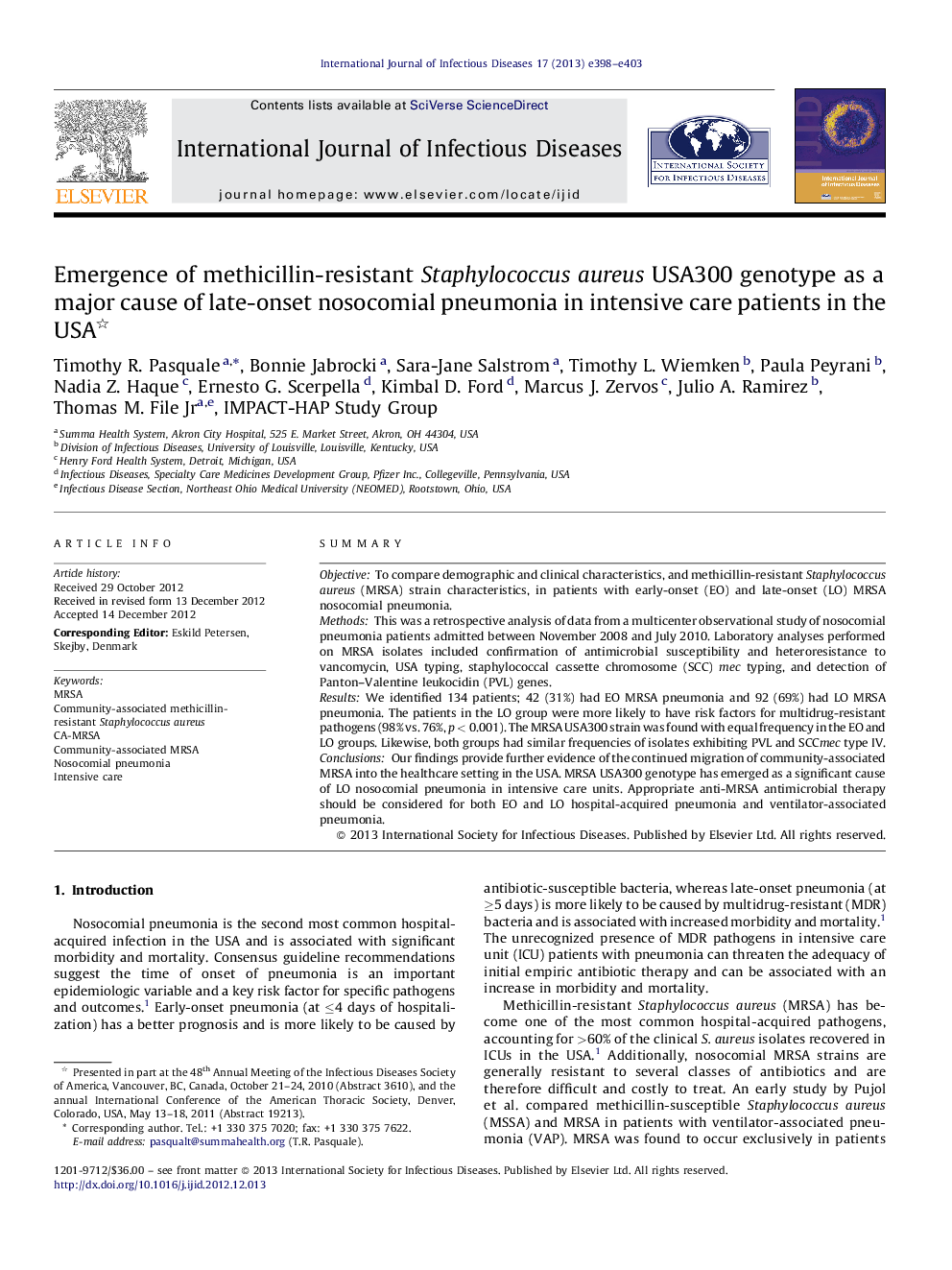| Article ID | Journal | Published Year | Pages | File Type |
|---|---|---|---|---|
| 3362993 | International Journal of Infectious Diseases | 2013 | 6 Pages |
SummaryObjectiveTo compare demographic and clinical characteristics, and methicillin-resistant Staphylococcus aureus (MRSA) strain characteristics, in patients with early-onset (EO) and late-onset (LO) MRSA nosocomial pneumonia.MethodsThis was a retrospective analysis of data from a multicenter observational study of nosocomial pneumonia patients admitted between November 2008 and July 2010. Laboratory analyses performed on MRSA isolates included confirmation of antimicrobial susceptibility and heteroresistance to vancomycin, USA typing, staphylococcal cassette chromosome (SCC) mec typing, and detection of Panton–Valentine leukocidin (PVL) genes.ResultsWe identified 134 patients; 42 (31%) had EO MRSA pneumonia and 92 (69%) had LO MRSA pneumonia. The patients in the LO group were more likely to have risk factors for multidrug-resistant pathogens (98% vs. 76%, p < 0.001). The MRSA USA300 strain was found with equal frequency in the EO and LO groups. Likewise, both groups had similar frequencies of isolates exhibiting PVL and SCCmec type IV.ConclusionsOur findings provide further evidence of the continued migration of community-associated MRSA into the healthcare setting in the USA. MRSA USA300 genotype has emerged as a significant cause of LO nosocomial pneumonia in intensive care units. Appropriate anti-MRSA antimicrobial therapy should be considered for both EO and LO hospital-acquired pneumonia and ventilator-associated pneumonia.
